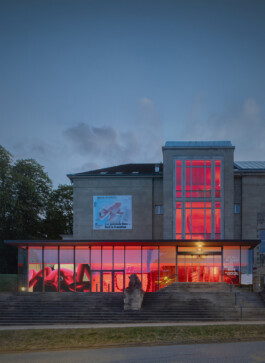
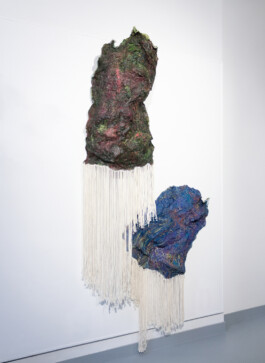
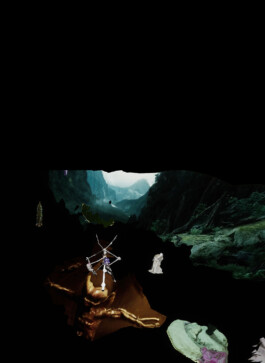
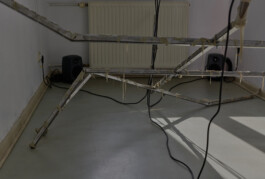
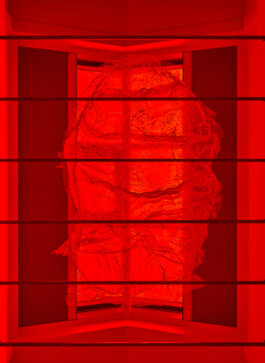
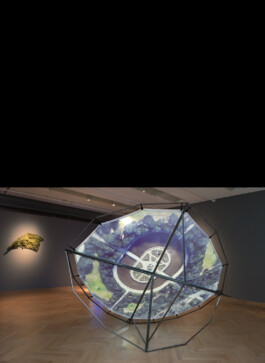
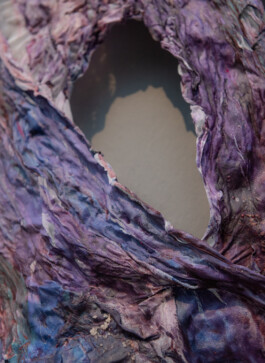
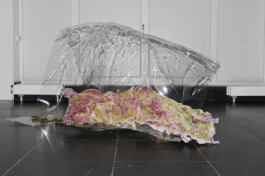
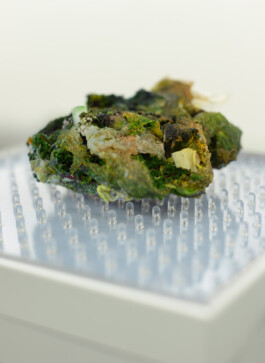
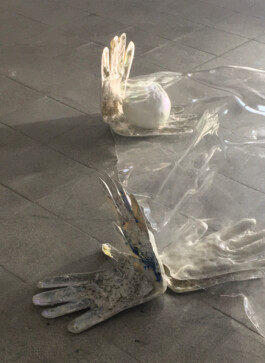
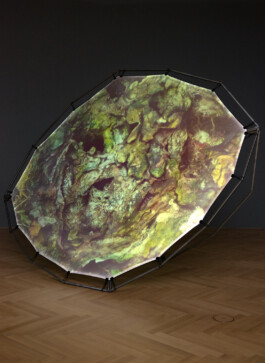
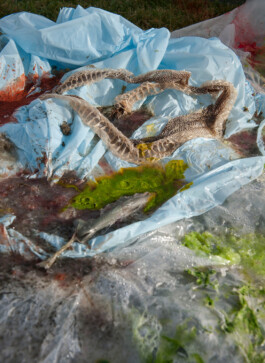

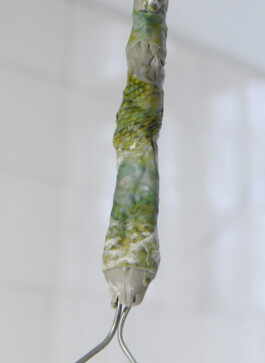
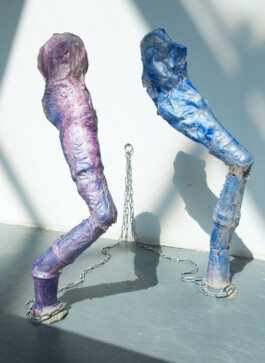
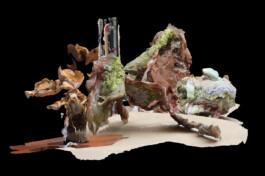
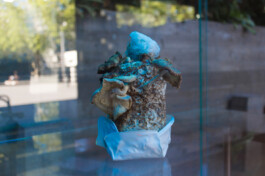
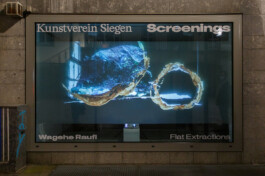
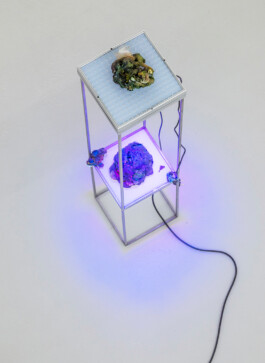
the borrowed house – shell in transition
Installation (nighttime view), 2025, Kunsthalle zu Kiel
what's left: disembodied passages
Objects, 2025, Cité internationale des arts, Paris
echoing grounds
Video game, 2022
www.echoinggrounds.de
echoing grounds
Video game installation (detail), 2023, galerie weisser elefant
ornamental hermit
Installation (details), 2022, Kunsthalle Willingshausen
orbiting the seed
Installation, 2021, Bundeskunsthalle Bonn
preset
Object, 2021, Bundeskunsthalle Bonn
mammoth with glass eye
Installation, 2019, Frankfurter Kunstverein
in between contemporary stones
Objects, 2017, Kunstverein Freiburg
this is so me – chirping balls
Installation (detail), 2020, Kunst- und Kulturstiftung Opelvillen Labor
orbiting the seed
Installation, 2021, Bundeskunsthalle Bonn
spirit in the soil
Installation (detail), 2016
moths as mess – hidden architect
Video still, 2020
moths as mess – hidden architect
Excerpt, 2020
this is so me – chirping balls
Installation (detail), 2020, Kunst- und Kulturstiftung Opelvillen Labor
alien nation
Objects, 2018, Central Academy of Fine Arts Beijing
mammoth with glass eye
Video still, 2019
cultivating – breeding – education
Installation, 2018, Rathaus Offenbach am Main
flat extractions
Screening, 2021, Kunstverein Siegen
in between contemporary stones
Objects, 2017, Kunstverein Freiburg
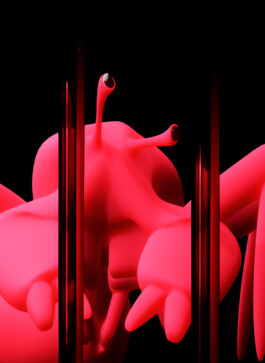
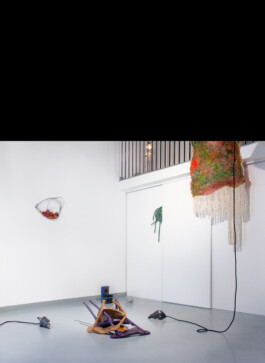
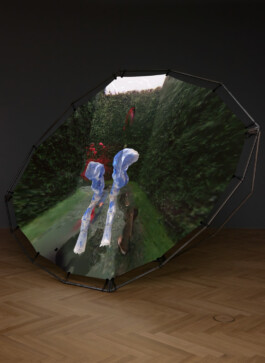
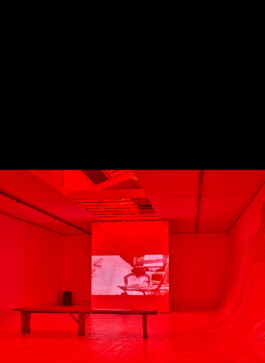
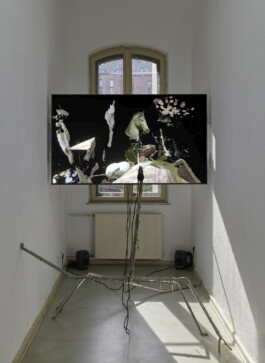
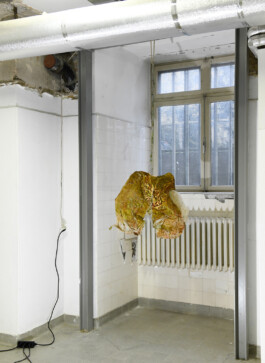
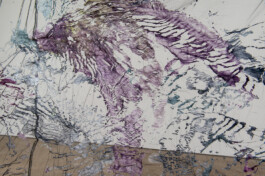
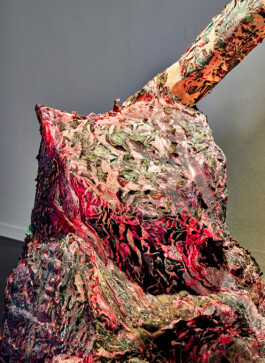
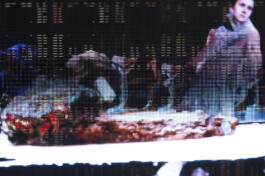
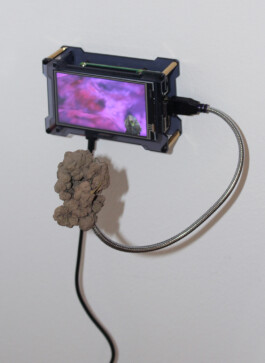
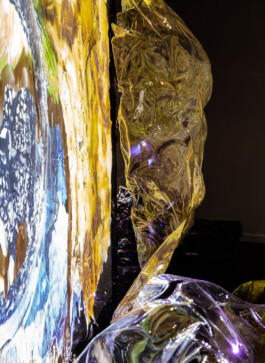
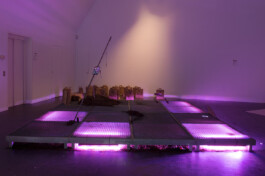
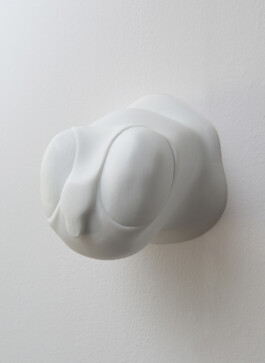
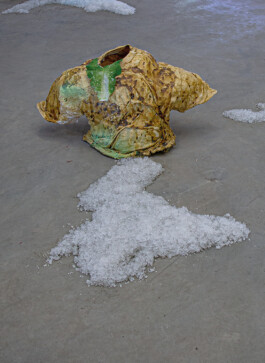
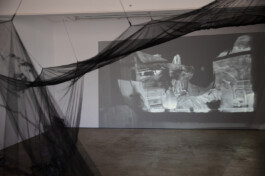
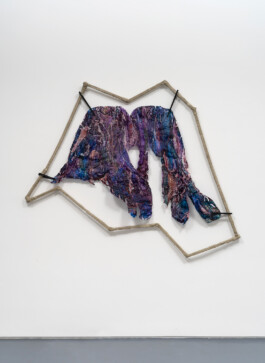
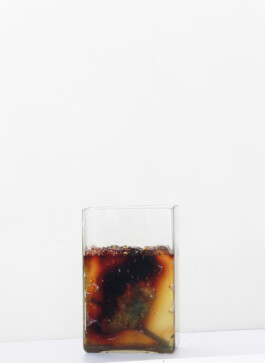
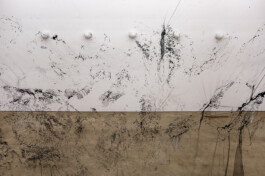
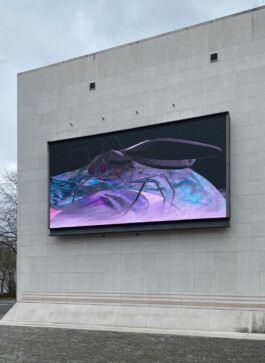
the borrowed house – shell in transition
Installation (detail), 2025, Kunsthalle zu Kiel
what's left: disembodied passages
2025, Cité internationale des arts, Paris
orbiting the seed
Installation, 2021, Bundeskunsthalle Bonn
ornamental hermit
Installation, 2022, Kunsthalle Willingshausen
echoing grounds
Video game, 2022, www.echoinggrounds.de
echoing grounds
Video game installation, 2023, galerie weisser elefant
this is so me – chirping balls
Installation, 2020, Kunst- und Kulturstiftung Opelvillen Labor
moths as mess
Installation (detail), 2020, Kressmann-Halle, Offenbach am Main
mammoth with glass eye
Installation (detail), 2019, Frankfurter Kunstverein
cultivating – breeding – education
Installation (detail), 2018, Kunsthalle Offenbach
casting worm controller
Installation, 2021, Synnika, Frankfurt am Main
Collaboration with Martin Dörr
mammoth with glass eye
Installation (detail), 2019, Frankfurter Kunstverein
compost cloud
Installation, 2018, Frankfurter Kunstverein
Collaboration with Martin Dörr, Alice Gustson, Yana Tsegay
Graphics: Kathrin Baumgartner, App-Implementation: Merlin Flügel
moths as mess
Installation (detail), 2020, Kressmann-Halle, Offenbach am Main
cultivating – breeding – education
Installation (detail), 2018, Kunsthalle Offenbach
moths as mess
Installation, 2020, Kressmann-Halle, Offenbach am Main
preset
Object, 2021, Mountains, Berlin
bunch of flowers
Object, 2017, Meisterhaus Gropius, Bauhaus Dessau
moths as mess
Installation, 2020, Kressmann-Halle, Offenbach am Main
moths as mess – hidden architect
Billboard (Video still), 2021, Bundeskunsthalle Bonn
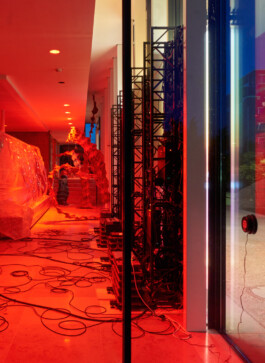
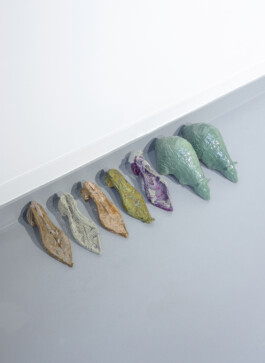
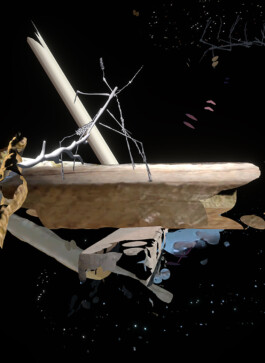
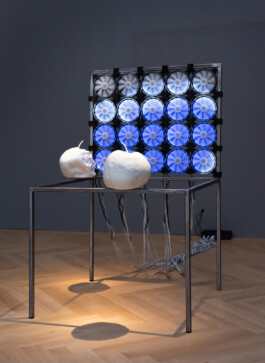
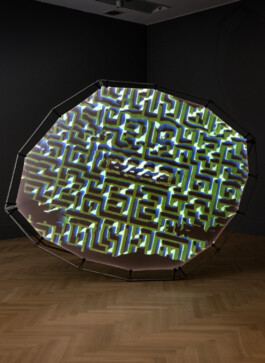
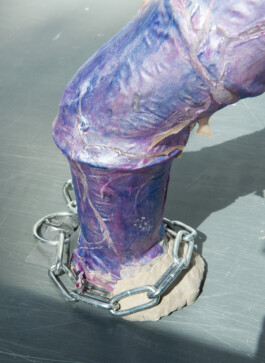
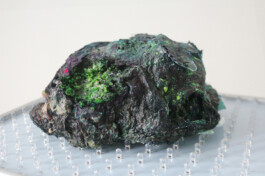
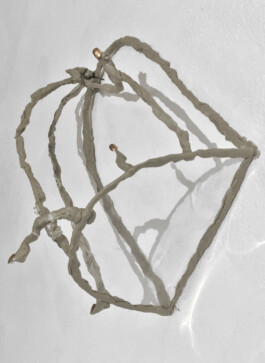
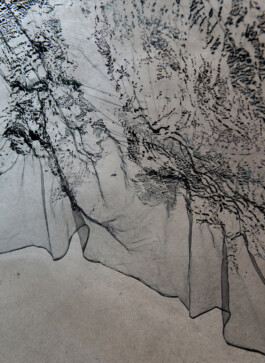
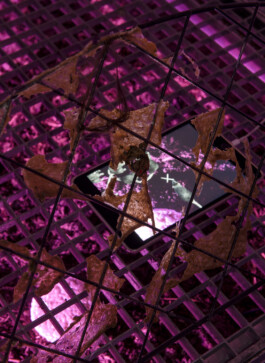
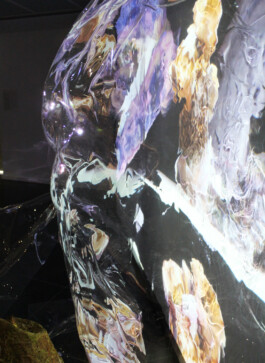
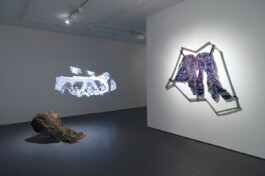
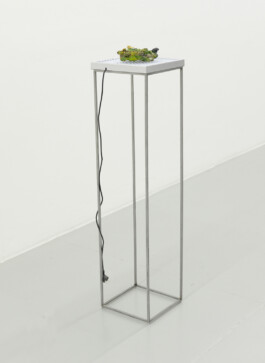
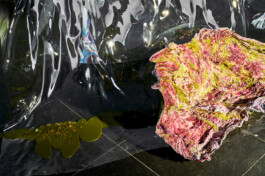
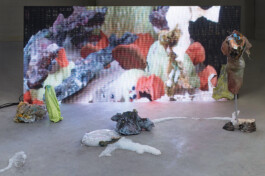
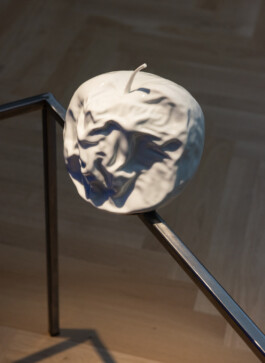
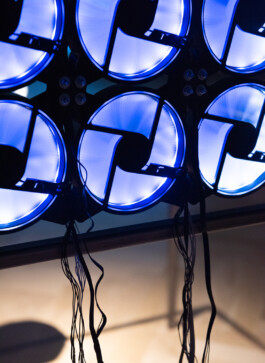
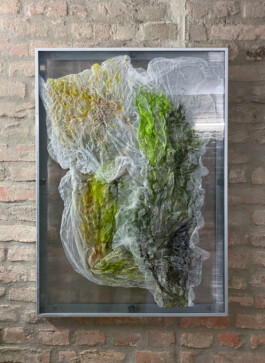
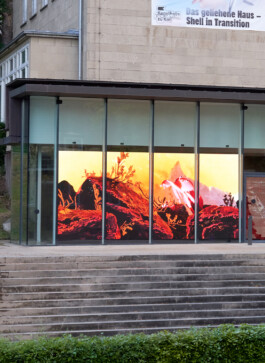
the borrowed house – shell in transition
Installation (nighttime view), 2025, Kunsthalle zu Kiel
what's left: disembodied passages
2025, Cité internationale des arts, Paris
ornamental hermit
Excerpt, 2022, Kunsthalle Willingshausen
echoing grounds
Video game, 2022, www.echoinggrounds.de
untitled (metaballs)
Installation, 2021, Bundeskunsthalle Bonn
orbiting the seed
Installation, 2021, Bundeskunsthalle Bonn
alien nation
Objects (detail), 2018, Central Academy of Fine Arts Beijing
in between contemporary stones
Objects, 2017, Kunstverein Freiburg
this is so me – chirping balls
Installation (detail), 2020, Kunst- und Kulturstiftung Opelvillen Labor
moths as mess
Installation (detail), 2020, Kressmann-Halle, Offenbach am Main
compost cloud
Installation (detail), 2018, Frankfurter Kunstverein
Collaboration with Martin Dörr, Alice Gustson, Yana Tsegay
Graphics: Kathrin Baumgartner, App-Implementation: Merlin Flügel
mammoth with glass eye
Installation (detail), 2019, Frankfurter Kunstverein
hidden architect
Video and objects, 2021, Mountains, Berlin
in between contemporary stones
Objects, 2017, Kunstverein Freiburg
mammoth with glass eye
Installation (detail), 2019, Frankfurter Kunstverein
cultivating – breeding – education
Installation, 2018, Kunsthalle Offenbach
untitled (metaballs)
Installation, 2021, Bundeskunsthalle Bonn
untitled (metaballs)
Installation (detail), 2021, Bundeskunsthalle Bonn
insecure carefree 2
Object, 2020, Frankfurt Varrentrappstr.
the borrowed house – shell in transition
Installation (daytime view), 2025, Kunsthalle zu Kiel
"And This is Us"
(excerpt)
Franziska Nori
2019, Frankfurter Kunstverein
Wagehe Raufi’s artistic investigation is a closer examination of the interface between material presence and digital fragility. Her installations dissolve the boundaries between analog and digital space by allowing real objects to encounter their logarithmic depiction and assembling them into artificial landscapes. With her sculptures and video works she attempts to expand digital space and to incorporate it into our immediate present.
She duplicates the real items in their digital reflection, so that their delimitations seem to dissolve. The result is a seemingly never-ending tracking shot across surface structures merging into each other. Digital objects loom on the horizon of the video with hypnotic constancy; their fragile surfaces seem to be generated pixel by pixel.The objects in the rendered sequence glide out of the depth of the unformulated background of the image. If the viewer visualizes the continuation of this movement into real space, the digital objects would become real and create an image space in which even the viewer becomes part of the construction.
The living processes of the organic substances ensure that they change their consistency and color in their growth and decay. As part of an exchange with the environment and surrounding materials, the fabrics dry and warp, and dissolve the surface. The hybrid objects unite organic and synthetic materials to form novel image surfaces of colors and textures that independently react to each other in the process.
Wagehe Raufi explores how different technical and analog methods can be used to translate objects into other media and forms.
These ways of scanning reality allow what is solid to become porous and seemingly loosely connected surface formations, referring to how we understand and construct our environment.
"Mapping Discomfort“
(excerpt)
Malina Lauterbach & Dierk Höhne
2019, Sprechsaal Berlin
The surrounding conditions affect its process of decay and eventually evoke a form dissolution.
Within this concept of constant transformation, Raufi’s analogue and -generic spaces intermingle. They both catalyze the entanglement of -bodies, objects and environments – obscuring the boundaries of these categories.
"Cleaning & Value“
(excerpt)
Anna Langgartner
The ultimate aim of this dialogue lies within the augmentation of knowledge about lost civilizations from the past.
Examining the materials independently already allows for conclusions about the use of products that occur in everyday life, the consumption of food, rites of personal hygiene, or technological knowledge of extracting and crafting organic and synthetic materials.
Especially organic materials are of great interest in these contexts, for they are often decomposed and can only be identified through costly methods of analysis.
These so-called clusters are crafted objects and not just a coincidental accumulation of different substances such as would be found in the remainders of garbage dumps or sewage systems. Time and effort were needed for their creation, and therefore, an intentional purpose or function can be expected. So, what are these objects made for?
Looking at the objects of Wagehe Raufi’s work “In Between Contemporary Stones” the archaeologist’s eye is confronted with a conglomeration of various organic and synthetic materials seemingly mashed together into clusters of diverse colour, texture and form. Therefore, the first question for an archaeologist would be:)
What exactly are these objects made of?
Visible to the eye are pieces of a foam-like material, plastic film and colour pigments such as green, pink and yellow. A more elaborate analysis would reveal remainders of make-up, sanitary products, different kinds of plastic, corn starch and other traces of aliment, and finally hydrogel and agar-agar. These last two materials – better described as water storage granules and gelatine extracted from algae – form a kind of matrix when they are mixed with water, which holds these vastly different materials together.
But still, an interpretation of the work in an archaeological sense could be described as an insight into the artist’s life through the combination of all the different materials and objects surrounding her on an everyday basis. And in a few hundred years only the plastic parts will remain, the original function as art will be eliminated without coincidentally passed on written.

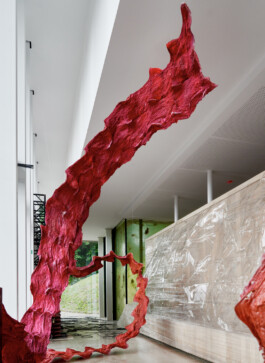

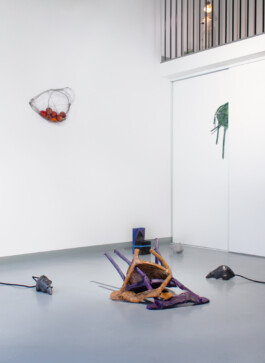



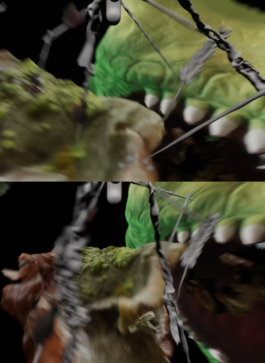






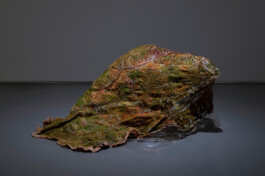






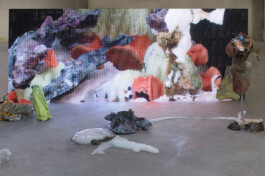







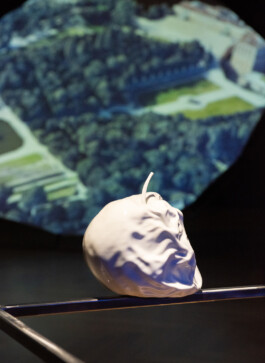
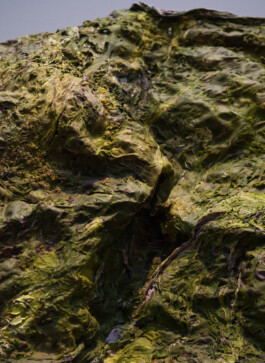



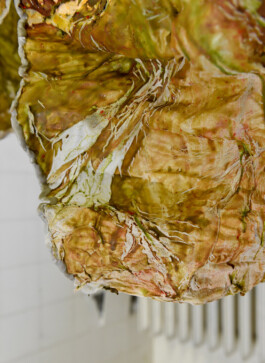












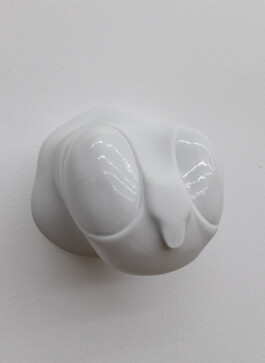









the borrowed house – shell in transition
Installation (nighttime view), 2025, Kunsthalle zu Kiel
the borrowed house – shell in transition
Installation (daytime view), 2025, Kunsthalle zu Kiel
the borrowed house – shell in transition
Installation (daytime view), 2025, Kunsthalle zu Kiel
what's left: disembodied passages
2025, Cité internationale des arts, Paris
what's left: disembodied passages
2025, Cité internationale des arts, Paris
what's left: disembodied passages
2025, Cité internationale des arts, Paris
echoing grounds
Video game installation, 2023, galerie weisser elefant
echoing grounds
Video game, 2022, www.echoinggrounds.de
ornamental hermit
Installation, 2022, Kunsthalle Willingshausen
orbiting the seed
Installation, 2021, Bundeskunsthalle Bonn
orbiting the seed
Installation, 2021, Bundeskunsthalle Bonn
cultivating – breeding – education
Installation (detail), 2018, Kunsthalle Offenbach
untitled (metaballs)
Installation, 2021, Bundeskunsthalle Bonn
hidden architect
Video and objects, 2021, Mountains, Berlin
blob
Object, 2019, Mountains, Berlin
mammoth with glass eye
Installation, 2019, Frankfurter Kunstverein
flat extractions
Screening, 2021, Kunstverein Siegen
casting worm controller
Installation, 2021, Synnika, Frankfurt am Main
Collaboration with Martin Dörr
mammoth with glass eye
Installation (detail), 2019, Frankfurter Kunstverein
this is so me – chirping balls
Installation (detail), 2020, Kunst- und Kulturstiftung Opelvillen Labor
compost cloud
Installation, 2018, Frankfurter Kunstverein
Collaboration with Martin Dörr, Alice Gustson, Yana Tsegay
Graphics: Kathrin Baumgartner, App-Implementation: Merlin Flügel
cultivating – breeding – education
Installation, 2018, Kunsthalle Offenbach
preset
Object, 2021, Mountains, Berlin
moths as mess
Installation (detail), 2020, Kressmann-Halle, Offenbach am Main
untitled (metaballs)
Installation (detail), 2021, Bundeskunsthalle Bonn
moths as mess
Installation, 2020, Kressmann-Halle, Offenbach am Main
ornamental hermit
Installation (detail), 2022, Kunsthalle Willingshausen
mammoth with glass eye
Installation, 2019, Frankfurter Kunstverein
this is so me – chirping balls
Installation (detail), 2020, Kunst- und Kulturstiftung Opelvillen Labor
untitled (metaballs)
Installation (details), 2021, Bundeskunsthalle Bonn
preset
Object (detail), 2021, Bundeskunsthalle Bonn
untitled (metaballs)
Installation (detail), 2021, Bundeskunsthalle Bonn
orbiting the seed
Installation, 2021, Bundeskunsthalle Bonn
preset
Object (detail), 2021, Bundeskunsthalle Bonn
this is so me – chirping balls
Installation (detail), 2020, Kunst- und Kulturstiftung Opelvillen Labor
this is so me – chirping balls
Installation (detail), 2020, Kunst- und Kulturstiftung Opelvillen Labor
this is so me – chirping balls
Installation, 2020, Kunst- und Kulturstiftung Opelvillen Labor
spirit in the soil
Installation (detail), 2016
in between contemporary stones
Objects, 2017, Kunstverein Freiburg
in between contemporary stones
Objects, 2017, Kunstverein Freiburg
moths as mess – hidden architect
Billboard (Videostill), 2021, Bundeskunsthalle Bonn
echoing grounds
Video game, 2022, www.echoinggrounds.de
mammoth with glass eye
Installation (detail), 2019, Frankfurter Kunstverein
compost cloud
Installation, 2018, Frankfurter Kunstverein
Collaboration with Martin Dörr, Alice Gustson, Yana Tsegay
Graphics: Kathrin Baumgartner, App-Implementation: Merlin Flügel
alien nation
Objects, 2018, Central Academy of Fine Arts Beijing
alien nation
Objects (detail), 2018, Central Academy of Fine Arts Beijing
moths as mess
Installation (detail), 2020, Kressmann-Halle, Offenbach am Main
moths as mess
Installation (detail), 2020, Kressmann-Halle, Offenbach am Main
orbiting the seed
Installation, 2021, Bundeskunsthalle Bonn
cultivating – breeding – education
Installation, 2018, Kunsthalle Offenbach
mammoth with glass eye
Installation (detail), 2019, Frankfurter Kunstverein
in between contemporary stones
Objects, 2017, Kunstverein Freiburg
mammoth with glass eye
Installation (detail), 2019, Frankfurter Kunstverein
moths as mess
Installation, 2020, Kressmann-Halle, Offenbach am Main
moths as mess – hidden architect
Videostill, 2020
bunch of flowers
Object, 2017, Meisterhaus Gropius, Bauhaus Dessau
insecure carefree 2
Object, 2020, Varrentrappstraße, Frankfurt am Main
"And This is Us"
(excerpt)
Franziska Nori
2019, Frankfurter Kunstverein
Wagehe Raufi’s artistic investigation is a closer examination of the interface between material presence and digital fragility. Her installations dissolve the boundaries between analog and digital space by allowing real objects to encounter their logarithmic depiction and assembling them into artificial landscapes. With her sculptures and video works she attempts to expand digital space and to incorporate it into our immediate present.
She duplicates the real items in their digital reflection, so that their delimitations seem to dissolve. The result is a seemingly never-ending tracking shot across surface structures merging into each other. Digital objects loom on the horizon of the video with hypnotic constancy; their fragile surfaces seem to be generated pixel by pixel.The objects in the rendered sequence glide out of the depth of the unformulated background of the image. If the viewer visualizes the continuation of this movement into real space, the digital objects would become real and create an image space in which even the viewer becomes part of the construction.
The living processes of the organic substances ensure that they change their consistency and color in their growth and decay. As part of an exchange with the environment and surrounding materials, the fabrics dry and warp, and dissolve the surface. The hybrid objects unite organic and synthetic materials to form novel image surfaces of colors and textures that independently react to each other in the process.
Wagehe Raufi explores how different technical and analog methods can be used to translate objects into other media and forms.
These ways of scanning reality allow what is solid to become porous and seemingly loosely connected surface formations, referring to how we understand and construct our environment.
"Mapping Discomfort“
(excerpt)
Malina Lauterbach & Dierk Höhne
2019, Sprechsaal Berlin
The surrounding conditions affect its process of decay and eventually evoke a form dissolution.
Within this concept of constant transformation, Raufi’s analogue and -generic spaces intermingle. They both catalyze the entanglement of -bodies, objects and environments – obscuring the boundaries of these categories.
"Cleaning & Value“
(excerpt)
Anna Langgartner
The ultimate aim of this dialogue lies within the augmentation of knowledge about lost civilizations from the past.
Examining the materials independently already allows for conclusions about the use of products that occur in everyday life, the consumption of food, rites of personal hygiene, or technological knowledge of extracting and crafting organic and synthetic materials.
Especially organic materials are of great interest in these contexts, for they are often decomposed and can only be identified through costly methods of analysis.
These so-called clusters are crafted objects and not just a coincidental accumulation of different substances such as would be found in the remainders of garbage dumps or sewage systems. Time and effort were needed for their creation, and therefore, an intentional purpose or function can be expected. So, what are these objects made for?
Looking at the objects of Wagehe Raufi’s work “In Between Contemporary Stones” the archaeologist’s eye is confronted with a conglomeration of various organic and synthetic materials seemingly mashed together into clusters of diverse colour, texture and form. Therefore, the first question for an archaeologist would be:)
What exactly are these objects made of?
Visible to the eye are pieces of a foam-like material, plastic film and colour pigments such as green, pink and yellow. A more elaborate analysis would reveal remainders of make-up, sanitary products, different kinds of plastic, corn starch and other traces of aliment, and finally hydrogel and agar-agar. These last two materials – better described as water storage granules and gelatine extracted from algae – form a kind of matrix when they are mixed with water, which holds these vastly different materials together.
But still, an interpretation of the work in an archaeological sense could be described as an insight into the artist’s life through the combination of all the different materials and objects surrounding her on an everyday basis. And in a few hundred years only the plastic parts will remain, the original function as art will be eliminated without coincidentally passed on written.